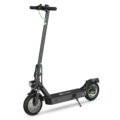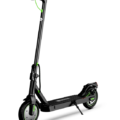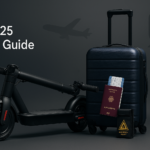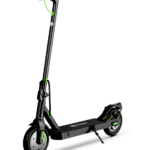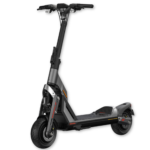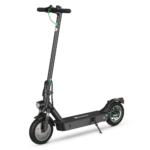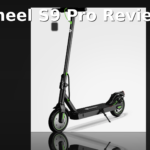- Home
- Scooters
- Electric Scooters
- isinwheel GT2 Pro
isinwheel GT2 Pro
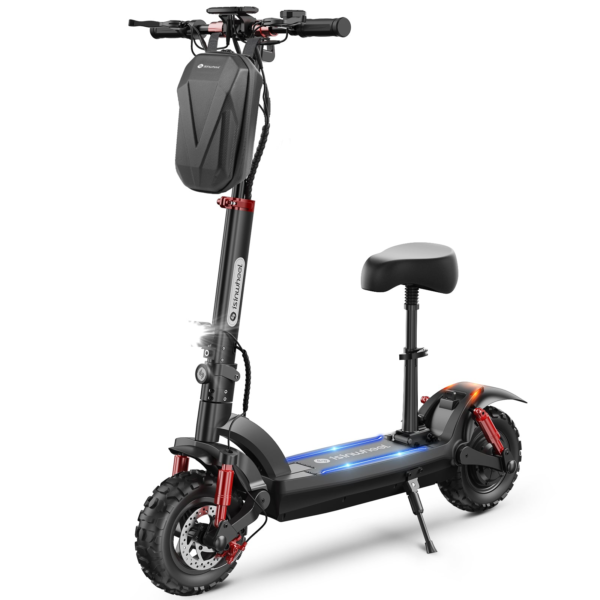

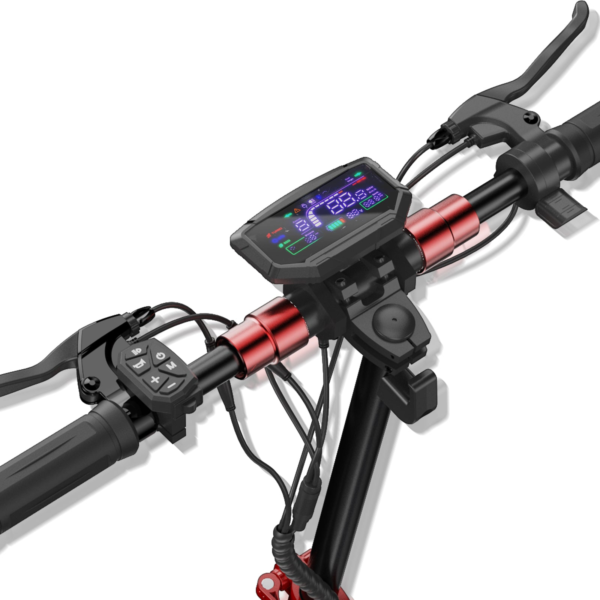
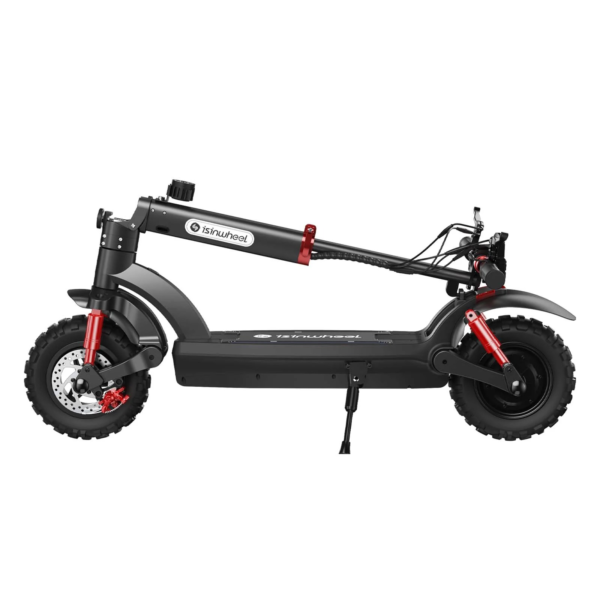
- Battery Range: 37 miles (60 km)
- Top Speed: 28 mph (45 km/h)
- Motor Power: 1000 W
- Weight Capacity: 330 lb (150 kg)
- Charging Time: ~5–7 h
- Scooter Weight: 53.0 lb (24.0 kg)
PROS
- 1000 W motor with 28 mph top speed
- 48 V 15 Ah (720 Wh) battery; ~37-mile range
- 11″ off-road pneumatic tires
- Front & rear suspension
- Dual disc + EABS braking
- 330 lb (150 kg) max load
CONS
- 53 lb weight reduces portability
- IP54 rating—avoid heavy rain/submersion
- No official app integration stated

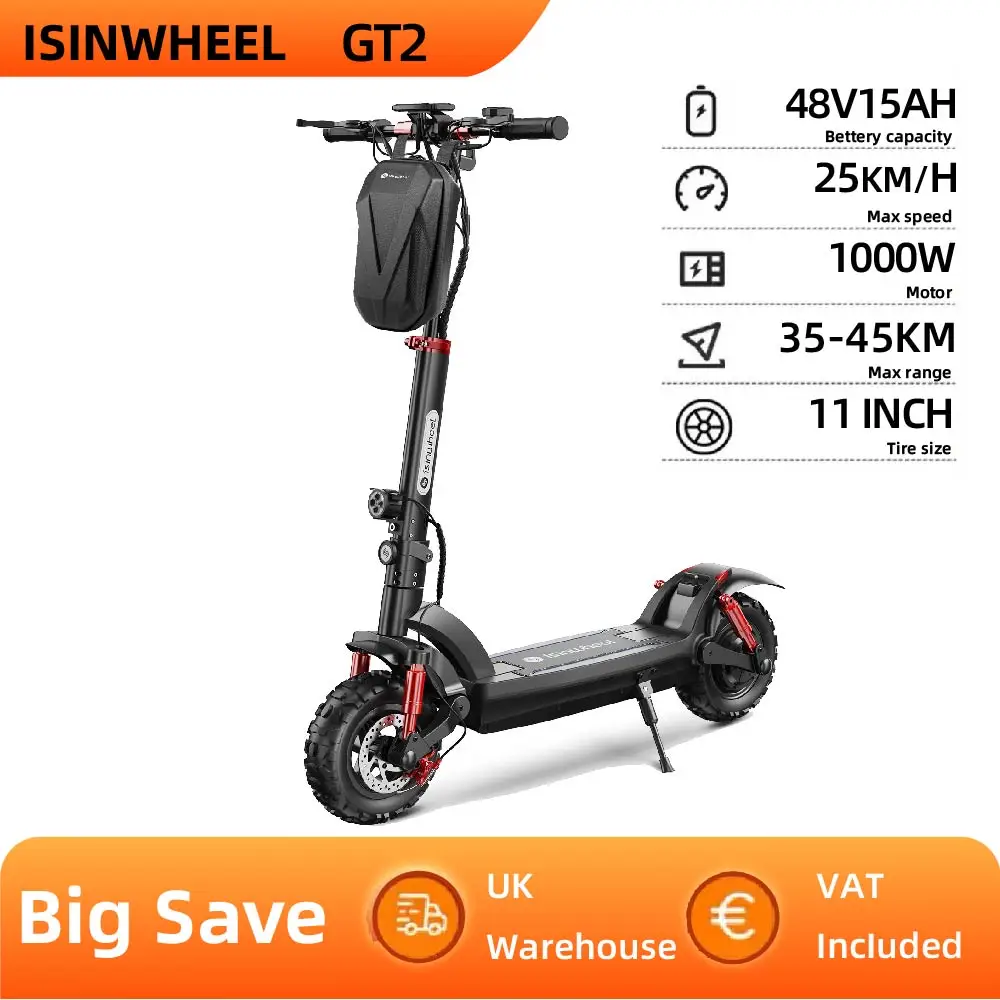
Table of contents
- What Is the isinwheel GT2 Pro?
- How the isinwheel GT2 Pro Works
- Key Specifications
- Design & Build Quality
- Performance Fundamentals
- Battery, Range & Efficiency
- Ride Quality & Comfort
- Braking & Safety Features
- Portability & Daily Usability
- Maintenance & Care
- Weather & Seasonal Considerations
- isinwheel GT2 Pro vs Alternatives
- Who the isinwheel GT2 Pro Is (and Isn’t) For
- FAQs
- Glossary
- Final Notes on Set-Up and Use
If you want a tough, long-range scooter that handles real-world streets and light trails without turning into a heavy monster, the isinwheel GT2 Pro hits a sweet spot. It pairs a 48V/15Ah battery with a punchy rear hub motor and full suspension, so daily commutes feel calm and weekend paths feel doable. Moreover, it blends stability with practicality, which makes it friendly for newer riders yet still satisfying for seasoned commuters. This overview explains what it is, how it works, the official specs in a clean table, and what to expect in day-to-day use.
What Is the isinwheel GT2 Pro?
The isinwheel GT2 Pro is an adult, full-suspension electric scooter built around a 48V architecture and a 1000W rated rear hub motor. It’s designed for riders who want more stability, range, and hill performance than entry-level commuters, yet still care about portability and a one-hand carry up a few steps. Furthermore, with 11-inch pneumatic off-road tires, dual-link suspension front and rear, and dual disc brakes with electronic assistance, its ride character is planted and forgiving.
Because it is aimed at mixed urban surfaces—potholes, patched asphalt, brick paths—plus occasional gravel or park-trail shortcuts, the GT2 Pro prioritizes comfort and control. Additionally, it includes a bright LED display, turn signals, and cruise control, which together simplify daily operation. Consequently, the scooter feels composed when traffic gets unpredictable, and it remains manageable when you need to fold it and stash it.
If you prefer a lighter sibling for shorter hops, the isinwheel S9 Pro stays nimble while keeping a commuter-friendly feel.
How the isinwheel GT2 Pro Works
Electric scooters all share the same core building blocks. The GT2 Pro keeps those parts simple and serviceable, and it ties them together smoothly.
- Motor: A brushless, rear-hub motor rated at 1000W delivers smooth thrust without belts or chains. Because it’s in the rear wheel, traction on climbs and during hard acceleration feels predictable. Think of it like a compact, sealed electric wheel that turns battery energy into forward motion with minimal maintenance. Additionally, rear drive reduces front wheel slip when you cross paint or wet patches.
- Controller: The controller is the scooter’s brain. It meters battery current to the motor and shapes throttle response. At low speeds, it ramps power gently, then opens up as you roll on. It also orchestrates regenerative braking and keeps the system within safe electrical limits. As a result, power delivery feels natural rather than jerky.
- Battery: A 48V, 15Ah lithium-ion pack (about 720 Wh) sits inside the deck. Higher voltage helps the motor maintain speed under load, while the 15Ah capacity underpins the scooter’s claimed long range. A built-in battery management system (BMS) watches temperature, voltage, and current to maximize safety and longevity. In practice, that means fewer surprises and more consistent performance.
- Throttle: The thumb throttle sends a signal to the controller to request more or less power. Hold steady, and the cruise control can maintain speed on flat ground. Release, and it cancels. Meanwhile, you can still make small speed trims with subtle thumb inputs.
- Brakes: Dual disc brakes provide the primary stopping force. An electronic anti-lock/regen function (E-ABS/KERS) adds light drag when you release the throttle and helps settle the chassis. The overall brake feel is firm and confidence-building once the pads bed in; moreover, lever travel remains short and predictable after a few rides.
That’s the whole loop: you push the throttle, the controller feeds the motor from the battery, and the brakes plus regen scrub speed on demand. Crucially, the GT2 Pro makes this cycle feel intuitive, so you can focus on the road rather than the hardware.
Key Specifications
Values below reflect the official product information for the GT2-series 1000W configuration commonly marketed as GT2 Pro. Regional listings sometimes vary slightly. Dimensions and weights include both imperial and metric units.
General
| Item | Value |
|---|---|
| Model Name | isinwheel GT2 Pro (GT2 1000W configuration) |
| Rider Age | 14+ |
| Max Rider Load | 330 lb (150 kg) |
| Water Resistance | IP54 splash-resistant |
| Riding Modes | 3 (approx. 0–10 mph, 0–18 mph, 0–28 mph) |
Performance & Power
| Item | Value |
|---|---|
| Top Speed | Up to 28 mph (45 km/h) |
| Rated Motor Power | 1000W rear hub (brushless) |
| Drive | Rear-wheel drive |
| Climbing Ability | Up to 35% grade (≈ 19°) |
| Tires | 11 in pneumatic, off-road tread |
Battery, Charging & Electrical
| Item | Value |
|---|---|
| Battery | 48V 15Ah lithium-ion (~720 Wh) |
| Charger | 54.6V / 2A |
| Charge Time | 5–7 hours |
| Claimed Max Range | Up to 37 miles (60 km) |
| Electrical Protections | BMS with over/under-voltage, over-current, and temperature safeguards |
| Lighting | High-output headlight, rear brake light, running lights, integrated turn signals |
| Display | LED digital dashboard (speed, battery, mode, lights, alerts) |
Build & Dimensions
| Item | Value |
|---|---|
| Frame | Aluminum alloy chassis, reinforced stem |
| Suspension | Front and rear dual-link shock absorbers |
| Unfolded Dimensions | 48 × 25 × 49 in (122 × 63 × 125 cm) |
| Folded Dimensions | 48 × 8.6 × 22 in (122 × 22 × 57 cm) |
| Net Weight | 53 lb (24.3 kg) |
| Deck | Wide standing area with grippy surface |
| Kickstand | Side-mounted |
Safety & Control
| Item | Value |
|---|---|
| Brakes | Front and rear disc brakes + E-ABS/KERS |
| Horn/Bell | Integrated |
| Reflectors | Frame and deck reflectors |
| Turn Signals | Integrated front/rear indicators |
Features & Extras
| Item | Value |
|---|---|
| Cruise Control | Yes (hold steady throttle) |
| Speed Modes | 3 user-selectable |
| App Connectivity | Typically No (controls on display) |
| Folding | Quick-fold stem latch (≈ 3 seconds) |
| Accessories | Compatible with common locks, bags, and mounts |
Warranty & Compliance
| Item | Value |
|---|---|
| Limited Warranty | 12 months on main components (region-dependent) |
| Electrical Safety | UL 2272 (US) / CE/UKCA (EU/UK), region-dependent |
| Charger Compliance | UL/CE as shipped by region |
Design & Build Quality
The isinwheel GT2 Pro feels purpose-built for rougher city blocks. The aluminum frame resists torsion without adding unnecessary heft, and the stem locks with a reassuring clunk when you raise it. The deck is long and wide enough for a natural staggered stance. Because the battery lives in the deck, the center of gravity sits low, which helps the scooter track straight over uneven patches. Additionally, the reinforced stem keeps steering precise when you cross seams or shallow potholes.
The cockpit is clean and readable. The LED display shows speed, battery bars, and ride mode at a glance. Buttons for mode and lights sit near your thumb, and the throttle is sized for repeated on-off inputs in traffic. Furthermore, cable routing is tidy, and the brake levers offer a solid, mechanical connection that’s easy to modulate.
Fit-and-finish stands out in two areas. First, the folding joint tolerances feel tight, which reduces creaks and chatter. Second, the fender design clears the 11-inch tires well, so you hear fewer annoying scrapes when you drop off a curb cut at low speed. Overall, the impression is “ready for daily duty” rather than a toy, and it holds up after many miles.
Performance Fundamentals
On flat ground, acceleration is brisk but not grabby. The controller meters current smoothly, so the scooter steps off the line with confidence. From walking pace to 15 mph happens quickly. Past that, the pull remains steady until you reach the high-teens; then it tapers as it approaches the upper 20s. Because the motor sits in the rear wheel, the scooter keeps traction when you lean forward slightly and push the throttle harder. Consequently, starts feel secure even on dusted surfaces.
Stability at cruising speeds is a highlight. The combination of a low deck, 11-inch pneumatics, and full suspension keeps the chassis calm. Expansion joints cause a muted “thud” rather than a sharp kick. If you ride at 20–22 mph on good pavement, the bars stay neutral and the deck feels planted. Moreover, quick lane changes remain controlled as long as your knees stay soft and your weight stays centered.
On hills, it behaves predictably. Short, punchy climbs around 7–10% grades are handled in stride, especially if you carry a bit of momentum into the slope. Very long grades will slow the scooter, yet it continues climbing without drama. Because the 35% figure represents a brief climbing ability under ideal conditions, expect real-world results to land lower, particularly with heavier riders or on rougher surfaces. Even so, the scooter maintains respectable pace on rolling terrain.
Battery, Range & Efficiency
With 48V and 15Ah, the pack stores about 720 Wh of energy. That’s the foundation for the stated up to 37 miles (60 km) of range. Real-world range always varies, so consider these factors carefully:
- Rider weight: Heavier riders draw more power at any speed; therefore, expect reduced range.
- Speed and wind: Riding above 20 mph or into a headwind raises consumption; consequently, plan extra buffer.
- Terrain: Frequent climbs and stops burn energy; meanwhile, steady cruising stretches miles.
- Tire pressure: Soft tires feel cushy but waste power; thus, check pressure weekly.
- Temperature: Cold weather reduces available capacity and voltage sag; as a result, winter range shrinks.
In mixed city riding at 15–20 mph with a 180–200 lb rider, a practical planning number is often 20–28 miles per full charge. You may see more on slower routes and less if you spend long stretches near top speed. Furthermore, smooth throttle habits—plus rolling off early and coasting—can save several watt-hours per mile.
Charging best practices:
Use the included 54.6V/2A charger on a stable, ventilated surface. Let the pack rest a few minutes after a ride before charging. Avoid deep discharges to 0%. For longevity, routine charging from roughly 20–30% up to about 90–100% works well if you ride daily. If storing for more than a few weeks, aim for ~50–60% state of charge and a cool, dry location. Importantly, do not charge a cold battery immediately after bringing the scooter in from freezing temperatures; let it acclimate first.
Ride Quality & Comfort
The 11-inch pneumatic tires deliver two advantages: a larger air volume for bump absorption and a broader contact patch for grip. Combined with dual-link suspension at both ends, the GT2 Pro glides over rough patches that would unsettle smaller-wheeled scooters. The suspension is tuned on the firmer side to keep steering precise, yet it remains compliant enough for broken city streets. Consequently, the scooter feels calm when you cross speed tables or seam-riddled asphalt.
Ergonomics matter on longer rides. The deck supports a comfortable staggered stance, and the bar height suits most riders in the 5’4″–6’2″ range without a hunch. Stem flex is minimal at typical commuting speeds. Because the frame is compact, very tall riders may prefer slightly wider bars; simple riser adapters exist if you need more leverage, though the stock setup feels balanced for most. Additionally, the grippy deck mat reduces foot fatigue because you adjust stance less often.
At speed, the chassis resists the light oscillations some scooters exhibit. If you experience a minor wiggle after a bump, shift your weight slightly rearward and soften your grip. The tires, pressure, and stance all influence stability, so small setup tweaks can produce a big difference. Likewise, keeping the headset snug helps preserve precise steering feel.
Braking & Safety Features
Two mechanical disc brakes supply decisive stopping power, and the E-ABS/KERS adds light regeneration when you roll off the throttle. At the lever, you feel a progressive bite that builds predictably. New pads can be a touch squeaky; a brief bedding-in ride solves that, after which lever travel shortens and bite becomes firmer. Moreover, adjusting cable tension monthly keeps the bite point consistent.
Lighting is generous. A bright headlight projects forward, while a rear light brightens under braking. Side reflectors increase visibility at intersections. Integrated turn signals are an excellent touch for commuting; motorists and cyclists can read your intent without guesswork. Additionally, using hand signals as a backup further clarifies your moves.
The IP rating is IP54, which means protection against dust ingress and splashes. It is not built for heavy rain or submersion. Therefore, ride like it’s splash-resistant, not waterproof, and avoid deep puddles. After wet rides, dry the scooter and check brake performance before your next outing.
Portability & Daily Usability
At 53 lb (24.3 kg), the isinwheel GT2 Pro is not ultralight, yet it remains manageable for short carries. The quick-fold mechanism lets the stem collapse in a few seconds, and the folded profile—48 × 8.6 × 22 in (122 × 22 × 57 cm)—fits behind a desk, in a hallway corner, or in a hatchback. Meanwhile, the latch feels stout enough for daily cycles.
For daily life:
- Carrying: Use two hands for stairs. For brief lifts over a curb, one hand near the stem clamp is fine. Nevertheless, avoid carrying it one-handed for long distances.
- Storage: Keep it indoors when possible. Avoid leaving it in direct sun or freezing temps for long periods. Additionally, store with a partial charge if you won’t ride for weeks.
- Security: Lock through the frame or stem to a fixed object. A disc-style lock on the brake rotor adds a visible deterrent. Always remove easily detachable accessories. Above all, choose bright, well-trafficked parking spots.
Controls are straightforward. Power on, choose a mode, and go. Cruise control activates after holding a steady throttle for several seconds and cancels with the brake or throttle input. The display remains readable in daylight, and the mode button cycles sensibly. Consequently, learning the system takes minutes rather than days.
Maintenance & Care
Electric scooters reward quick, regular checks. This simple schedule keeps the isinwheel GT2 Pro running smoothly and safely.
- Before each ride (30–60 seconds):
Tire pressure check by thumb (top off weekly with a gauge), quick brake lever squeeze, folding latch inspection, headlight/turn signal test. Additionally, listen for unusual creaks or cable rub. - Weekly:
Inflate tires to your preferred pressure (commuters often target 36–42 psi, lighter riders can go slightly lower for comfort). Wipe dust from the deck and stem. Check for any loose fasteners. Moreover, verify that the kickstand spring snaps back smartly. - Monthly:
Inspect brake pads for wear; adjust cable tension so the lever engages firmly by the halfway point. Check rotor alignment and look for rub. Confirm there’s no play at the folding joint; snug hardware if needed. Likewise, check headset tightness and stem clamp alignment. - Quarterly:
Deep clean. Inspect wiring at the headlight and display for abrasion. Lubricate the folding latch pivot lightly. Review the user guide’s maintenance notes to confirm intervals. Furthermore, inspect tire sidewalls for cuts and replace worn tubes before they strand you. - Battery habits:
Avoid repeated 0% discharges. Don’t charge immediately after a very hot or very cold ride; allow a few minutes at room temperature. If the scooter sits for weeks, store it around 50–60% charge and check monthly. Ultimately, gentle cycles prolong battery life.
Small, consistent attention keeps performance sharp and extends component life. As a bonus, these checks help you spot problems early.
Weather & Seasonal Considerations
Rain: The scooter’s IP54 rating handles splashes, yet heavy rain risks water ingress at connectors and the deck seam. If a sudden shower starts, reduce speed, avoid puddles, and get home. After any wet ride, dry the scooter, especially near the headlight, deck seam, and brake hardware. Then, test the brakes in a safe area.
Heat: High ambient temperatures raise battery temperature and can reduce lifespan. Park in the shade. Let the scooter cool before charging. Additionally, avoid sealing the scooter in a hot trunk for hours.
Cold: Capacity dips in the cold. Expect less range below 50°F (10°C), and a further drop near freezing. Pre-warm the scooter indoors and ride a touch slower to stretch range. Don’t fast-charge cold packs; let them reach room temperature first. Meanwhile, consider slightly lower tire pressure for grip on cold pavement.
Traction: Wet manhole covers, painted lines, and leaves are slick. Brake earlier, stand tall over the deck, and avoid sharp steering inputs. Lower tire pressures marginally in winter for a larger contact patch, while staying within safe limits. Conversely, raise pressure again when temperatures rise.
isinwheel GT2 Pro vs Alternatives
Against basic commuter scooters: The isinwheel GT2 Pro accelerates harder, rides smoother, and climbs steeper hills. It also stops more convincingly thanks to dual disc brakes and electronic assist. However, it weighs more and takes a bit more space when folded. Even so, many riders accept the trade because comfort and control improve noticeably.
Against performance bruisers: Big dual-motor machines outgun the GT2 Pro in raw thrust and top speed, but they are heavier, larger, and less convenient for daily carry and storage. If your route mixes bike lanes, curb cuts, and occasional rough patches, the GT2 Pro’s balance of power and portability often fits better. Conversely, if you demand intense acceleration and 35+ mph cruising, a bigger platform makes more sense.
Against off-road-leaning cruisers: The GT2 Pro keeps the rugged tires and suspension, yet stays nimble in tight urban spaces. It’s a “go-anywhere commuter,” not a dedicated trail scooter. If you primarily ride unpaved terrain for long distances, a model with bigger batteries and burlier suspension may suit you more. Nevertheless, for city riders who occasionally venture onto gravel paths, this scooter lands in a sweet middle ground.
Riders comparing dual-motor punch and a top-tier chassis can also look at the Segway Ninebot GT2, which trades portability for higher output.
Who the isinwheel GT2 Pro Is (and Isn’t) For
Great for:
- Daily commuting across mixed pavement with some rough patches
- Students and staff who want a reliable campus-to-city ride
- Multi-modal travelers who hop between scooter, bus, and rideshare
- Riders on rolling terrain who need real climbing ability without a huge chassis
Maybe not ideal for:
- Walk-up apartments above several flights if you must carry it daily by yourself
- Adrenaline seekers who want extreme acceleration and 35+ mph speeds
- All-weather riders who must ride in heavy rain frequently
If those trade-offs match your situation, the isinwheel GT2 Pro offers a strong balance of speed, comfort, and practicality. Moreover, its straightforward controls shorten the learning curve for new owners.
FAQs
1) What top speed can the isinwheel GT2 Pro actually reach?
Under favorable conditions, it can reach up to 28 mph (45 km/h). Real-world speeds depend on rider weight, wind, grade, and battery state. Additionally, tire pressure and temperature influence top-end performance.
2) How far can I ride per charge?
The claimed maximum is up to 37 miles (60 km). In mixed urban riding at moderate speeds, many riders should plan around 20–28 miles per charge. As always, conservative throttle use extends range.
3) Does the scooter have cruise control?
Yes. Hold a steady throttle for a few seconds, and cruise control engages. Tap the brake or nudge the throttle to cancel. Consequently, long straight sections feel more relaxed.
4) Can I ride the isinwheel GT2 Pro in the rain?
It’s IP54 splash-resistant, so light splashes are fine, but heavy rain and deep puddles should be avoided. Dry the scooter after any wet ride. Furthermore, re-check brake performance before your next commute.
5) What tires does it use, and what pressure is best?
It uses 11-inch pneumatic tires. Many commuters run 36–42 psi, adjusting for weight and comfort. Check pressure weekly. Meanwhile, watch for seasonal temperature swings, which change pressure.
6) What’s included in the warranty?
The scooter typically ships with a 12-month limited warranty on major components. Details vary by region, so keep your proof of purchase and read the warranty card. Additionally, register your purchase if your region offers benefits for doing so.
7) Where can I find a concise isinwheel GT2 Pro overview?
You’re reading one. This guide covers what it is, how it works, key specs, and real-world tips in one place. For a quick recap, scan the tables and section summaries.
Glossary
- Ah (Amp-hours): A measure of battery capacity. Higher Ah generally means more stored energy at the same voltage.
- Wh (Watt-hours): Total energy (voltage × amp-hours). Useful for comparing range potential across scooters.
- BMS (Battery Management System): Electronics that protect and balance the battery cells.
- Controller: The device that manages power flow from the battery to the motor and shapes throttle/brake responses.
- Brushless Hub Motor: A sealed motor inside the wheel. Efficient and low-maintenance.
- Regen / KERS: Regenerative braking that converts some kinetic energy back into the battery while slowing the scooter.
- E-ABS: Electronic anti-lock assistance that modulates braking to reduce wheel lock on slick surfaces.
- IP Rating: Ingress Protection rating. IP54 means dust-protected and splash-resistant, not waterproof.
- Stem Flex: The slight bending of the handlebar stem under load. Less flex feels more precise at speed.
- Deck: The platform you stand on; a lower, wider deck improves stability and comfort.
- Pneumatic Tire: An air-filled tire that cushions bumps and improves grip versus solid tires.
- Peak vs Rated Power: Peak is a short burst figure; rated is continuous. For commuting, rated power better reflects day-to-day thrust.
- Grade (Climb %): The steepness of a hill. 10% is about 5.7°; 35% is roughly 19°.
- UL 2272 / CE / UKCA: Electrical safety and compliance marks depending on region.
- Voltage Sag: Temporary drop in battery voltage under high load, noticeable as reduced punch at low state of charge.
- Contact Patch: The area of tire touching the ground; larger patches usually add grip but may increase rolling resistance.
Final Notes on Set-Up and Use
Spend your first ride in the lowest mode to learn throttle and brake feel. After a few miles, re-check fasteners at the folding joint and handlebars. Bed in the brakes with several smooth stops from a moderate speed. Then, choose a middle mode for daily riding and reserve the highest mode for clearer stretches of road. Keep tire pressures consistent, and the isinwheel GT2 Pro will feel composed and efficient. Finally, build a simple pre-ride habit; those 30 seconds pay off every week.
Specifications
General
| Model The Model specifies the exact version or name of the scooter. It helps identify its unique design, features, and specifications within the manufacturer’s product line. Knowing the model makes it easier to compare options, find compatible accessories, or look up support information. | GT2 Pro |
| Brand The Brand identifies the manufacturer or company that designs and produces the scooter. A trusted brand is a sign of quality, reliability, and good customer support. Well-known brands often have higher standards for safety, performance, and after-sales service, giving you more confidence in your purchase. | isinwheel |
| Release Date The Release Date indicates when the scooter model was officially launched on the market. This helps you know how current the design, technology, and features are. A newer release date often means updated components, improved performance, and the latest safety or smart features. | 17 November 2025 |
| Recommended Age Recommended Age indicates the minimum age range that the scooter is designed for, based on safety, size, and ease of use. Following the recommended age helps ensure that riders can handle the scooter’s speed, weight, and controls comfortably and safely. Always check local laws and use protective gear, especially for younger riders. | 14+ |
Performance & Power
| Motor Power (Wattage) What it means: The motor power, measured in watts (W), shows how strong the scooter’s electric motor is. Why it matters: Higher wattage usually means better acceleration, more torque, and improved performance on hills or rough terrain. For example, a 250W motor is good for flat city roads and light riders, while a 500W or 1000W motor provides more power for faster speeds or climbing steep inclines. | 1000 W rear hub motor |
| Top Speed The Top Speed indicates the maximum speed that the scooter can reach under optimal conditions. It’s usually measured on level ground with a fully charged battery and an average rider weight. A higher top speed allows you to travel longer distances faster, but always ensure you ride within legal speed limits and your personal comfort zone for safety. | 28 mph (45 km/h) |
| Battery Capacity Battery Capacity refers to the total amount of energy the scooter’s battery can store, usually measured in ampere-hours (Ah) or watt-hours (Wh). A higher battery capacity means you can ride longer distances on a single charge, reducing the need for frequent recharging. Keep in mind that actual range can vary depending on rider weight, terrain, speed, and weather conditions. | 48 V 15 Ah (720 Wh) |
| Estimated Range per Charge The Estimated Range per Charge indicates the average distance the scooter can travel on a single full battery charge. This range is calculated under optimal conditions, such as flat terrain, moderate speed, and average rider weight. Real-world range may vary depending on riding style, terrain, weather, and load. A longer range means fewer recharges and greater freedom for longer trips. | up to 37 miles (60 km) |
| Hill Climb Ability Hill Climb Ability describes the maximum incline or slope that the scooter can handle while maintaining stable performance. It’s typically expressed as a percentage or in degrees. A higher hill climb rating means the scooter can tackle steeper hills without losing too much speed or power. Actual climbing performance may vary based on rider weight, battery charge, and terrain conditions. | up to 35% |
| Drive System The Drive System refers to how power from the motor is delivered to the wheels. Electric scooters typically use either a hub motor (directly integrated into the wheel) or a chain/belt drive system. A high-quality drive system ensures smooth acceleration, efficient power transfer, and low maintenance. The choice of drive system affects performance, noise level, and overall ride experience. | Rear hub (RWD) |
Charging & Electrical
| Charging Time Charging Time indicates how long it takes to fully recharge the scooter’s battery from empty to 100% using the standard charger provided. Faster charging means less downtime and more time on the road. Actual charging time may vary slightly depending on battery capacity, charger output, and environmental conditions. | Approx. 5–7 hours |
| Battery Type Battery Type refers to the specific technology used in the scooter’s battery, which affects performance, lifespan, weight, and charging time. Most modern electric scooters use high-quality lithium-ion (Li-ion) batteries because they offer a good balance of energy density, durability, and low maintenance. A reliable battery type ensures consistent power delivery and longer riding ranges. | Lithium-ion pack with BMS |
| Removable Battery A Removable Battery means the battery pack can be easily detached from the scooter for convenient charging and replacement. This feature allows you to charge the battery separately, swap it with a spare for extended range, or securely store it indoors in extreme weather. Removable batteries add flexibility and make it easier to keep your scooter powered up wherever you are. | Non-removable internal battery (fixed pack) |
| Regenerative Braking Regenerative Braking is an energy-saving feature that converts some of the energy normally lost during braking back into battery power. When you slow down or brake, the motor works in reverse to generate electricity, which helps extend the scooter’s range and improves overall efficiency. This system also reduces wear on traditional brake components, leading to lower maintenance over time. | Yes (via electronic brake) |
| Lighting Lighting refers to the built-in front and rear lights that enhance visibility and safety when riding in low-light conditions or at night. Good lighting helps you see the road ahead and ensures that other road users can see you. Many scooters include LED headlights, taillights, and sometimes brake lights or side reflectors for added safety and compliance with local traffic regulations. | LED headlight, rear LED/brake, reflectors |
Build & Dimensions
| Scooter Weight Scooter Weight refers to the total weight of the scooter when fully assembled, including the battery. This affects how easy it is to carry, lift, and store the scooter when not in use. A lighter scooter is more portable and convenient for commuting, especially if you need to carry it upstairs or onto public transport. Keep in mind that a sturdy frame and quality components may add to the weight but also contribute to better durability and ride stability. | 53.0 lb (24.0 kg) |
| Maximum Rider Weight Maximum Rider Weight indicates the highest rider weight that the scooter is designed to safely support while maintaining optimal performance and stability. Staying within this limit helps ensure reliable acceleration, braking, and climbing ability, and it protects the frame, suspension, and motor from excessive strain. Exceeding the recommended limit may reduce performance and increase wear on components. | 330 lb (150 kg) |
| Deck Size Deck Size refers to the dimensions of the scooter’s standing platform. A wider and longer deck provides more foot space, allowing you to stand comfortably and adjust your stance while riding. A well-sized deck improves balance and stability, especially on longer rides or at higher speeds. Compact decks, on the other hand, help keep the scooter lightweight and portable. | Robust off-road frame; wide deck |
| Handlebar Height Handlebar Height refers to the distance from the deck to the handlebars, which affects your riding posture and comfort. An appropriate handlebar height helps you maintain good balance, reduces strain on your back and arms, and makes steering more comfortable. Some scooters have adjustable handlebars to fit riders of different heights, while others have a fixed height for a streamlined design. | Fixed |
| Folding Mechanism The Folding Mechanism describes how easily and securely the scooter can be folded for carrying and storage. A well-designed folding system lets you quickly collapse the scooter into a compact size, making it convenient to transport on public transit, store under a desk, or fit into a car trunk. Look for sturdy latches and safety locks to ensure the scooter stays firmly in place when folded or unfolded. | 3-step quick fold |
| Dimensions Folded Dimensions indicate the size of the scooter when it’s fully folded. This measurement shows how much space the scooter will take up when stored or carried, making it easier to check if it will fit in your car trunk, under a desk, or in a closet. Compact folded dimensions are ideal for commuters who need to bring their scooter on public transport or store it in tight spaces. | Folded: 48 × 8.6 × 22 in (122 × 22 × 56 cm); Unfolded: 48 × 25 × 49 in (122 × 63 × 125 cm) |
| Material Material refers to the primary construction materials used for the scooter’s frame and key components. High-quality materials like aircraft-grade aluminum, reinforced steel, or durable composites provide strength, stability, and a lighter overall weight. A sturdy material ensures the scooter can handle daily wear and tear while maintaining safety and performance. | Aluminum alloy |
Safety & Control
| Brake Type(s) Brake Type(s) describe the braking systems the scooter uses to help you slow down or stop safely. Common brake types include mechanical brakes (like drum or disc brakes), electronic brakes, and foot brakes. Many scooters combine multiple braking systems for added safety and shorter stopping distances. The type and quality of brakes affect your control, especially when riding at higher speeds or on slopes. | Front & rear mechanical disc + EABS |
| Suspension Suspension refers to the system that absorbs shocks and vibrations while riding, providing a smoother and more comfortable ride over uneven or rough surfaces. Scooters may have front suspension, rear suspension, or dual suspension for better shock absorption and stability. Good suspension helps reduce rider fatigue and improves control, especially when riding on bumpy roads or off-road paths. | Front & rear suspension |
| Tire Type Tire Type refers to the kind of tires the scooter uses, which directly affects ride comfort, traction, and maintenance. Common types include solid (airless) tires, pneumatic (air-filled) tires, or hybrid options. Pneumatic tires offer better shock absorption and a smoother ride on rough surfaces, while solid tires are puncture-proof and require less upkeep. The right tire type helps ensure safe handling and a comfortable ride in different conditions. | 11″ off-road pneumatic tires |
| Tire Size Tire Size indicates the diameter and width of the scooter’s tires, which affect ride comfort, stability, and how well the scooter handles different terrains. Larger tires generally offer better shock absorption and a smoother ride over bumps and rough surfaces, while smaller tires keep the scooter lighter and more portable. Choosing the right tire size helps ensure a balance between agility and comfort. | 11-inch |
| Kickstand The Kickstand is a built-in stand that allows you to park your scooter upright when it’s not in use. A sturdy kickstand keeps the scooter stable and prevents it from tipping over, protecting it from scratches and damage. It also makes storing and accessing your scooter more convenient, whether you’re at home, work, or on the go. | Side kickstand |
| Water Resistance Rating Water Resistance Rating indicates how well the scooter is protected against water and moisture, usually shown as an IP (Ingress Protection) rating. This rating helps you understand whether the scooter can handle light rain, splashes, or wet roads without damage. While most scooters are not fully waterproof, a good water resistance rating adds peace of mind when riding in changing weather conditions. Always avoid deep puddles or submerging the scooter to protect its electrical components. | IP54 |
Features & Extras
| Display/Console The Display (or Console) shows important real-time information about your ride, helping you monitor your scooter’s status at a glance. Typical displays show speed, battery level, distance traveled, and riding mode. Some models also include additional features like Bluetooth connectivity, app integration, or backlighting for better visibility at night. A clear and easy-to-read display enhances safety and convenience on every trip. | LED dashboard with speed, battery, mode |
| Ride Modes Ride Modes refer to the different speed and power settings you can choose to match your riding style or road conditions. Common modes include eco for maximum range and energy efficiency, standard for everyday balance, and sport or turbo for higher speed and stronger acceleration. Switching between ride modes allows you to customize performance, conserve battery, and ride safely in various environments. | 3 modes |
| Smart App Connectivity Smart App Connectivity lets you pair your scooter with a dedicated mobile app via Bluetooth. Using the app, you can monitor real-time ride stats like speed, battery level, and range, adjust settings such as ride modes or cruise control, lock the scooter for added security, and sometimes receive firmware updates. This feature adds convenience and allows you to personalize your riding experience right from your smartphone. | Not specified |
| Anti-Theft System The Anti-Theft System helps protect your scooter from unauthorized use or theft. This feature can include built-in alarms, electronic motor locks, GPS tracking, or remote locking through a mobile app. A good anti-theft system provides peace of mind when parking your scooter in public spaces, adding an extra layer of security to safeguard your investment. | Not specified |
| Cruise Control Cruise Control allows you to maintain a steady speed without continuously holding the throttle. This feature makes longer rides more comfortable by reducing hand fatigue and providing a smoother, more relaxed riding experience — especially on flat, open roads or bike lanes. For safety, cruise control can usually be easily activated or deactivated while riding. | Not specified |
| Accessories Included Accessories Included lists the additional items that come with the scooter to enhance your riding experience and convenience. Common accessories may include a charger, kickstand, bell, lights, phone holder, or carrying strap. These extras add value by making your scooter safer, easier to use, and ready to ride straight out of the box. | Scooter, charger (54.6V/2A), tools, manual |
Warranty & Compliance
| Warranty Period The Warranty Period indicates how long the manufacturer guarantees the scooter against defects in materials and workmanship under normal use. A good warranty provides peace of mind, showing the brand’s confidence in its product quality. Always check what parts are covered, such as the frame, battery, and motor, and follow the maintenance guidelines to keep your warranty valid. | 12 months (region-dependent) |
| Certifications Certifications confirm that the scooter meets specific safety, quality, and environmental standards set by recognized organizations or regulatory bodies. Common certifications may include CE, RoHS, UL, or other local compliance marks, depending on your region. These certifications ensure that the scooter is manufactured to high standards and is safe and legal to use in your country. | Local micromobility compliance (region-dependent) |
Price Comparison




